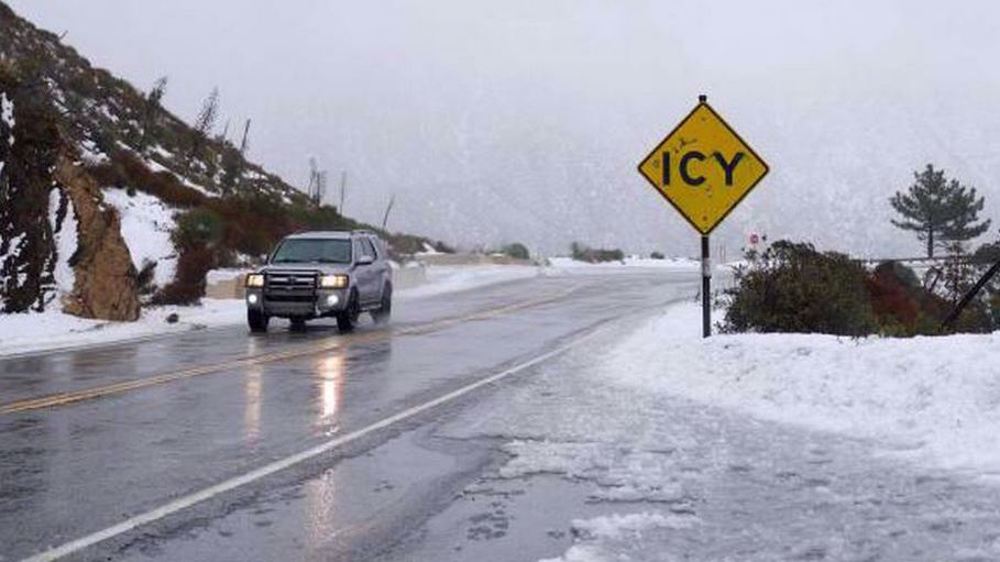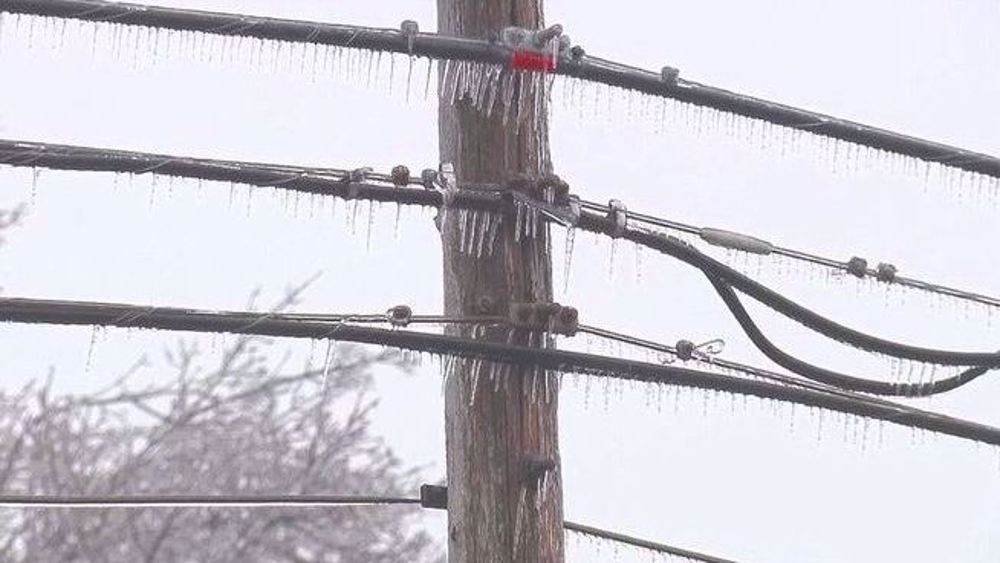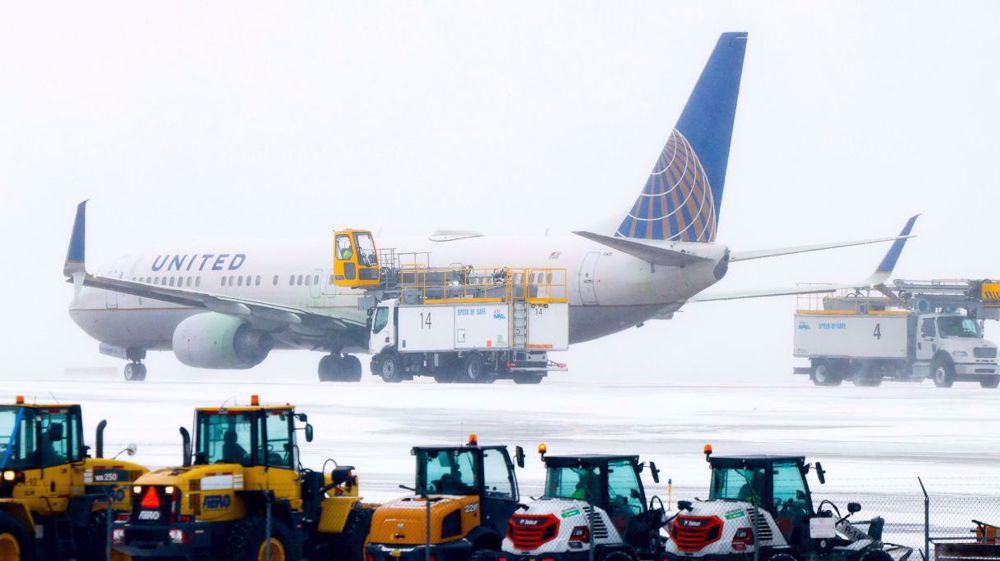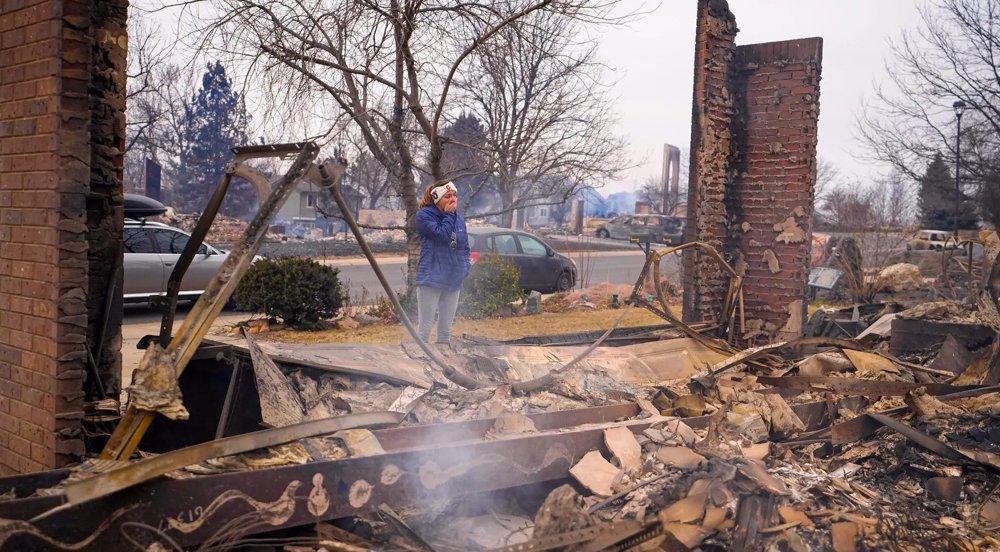US ice storm leaves half a million Americans without power in Michigan
Wintery cold weather has hit the East and West of the United States, walloping some areas in “historic” proportions.
An ice storm has threatened the livelihoods of half a million Americans in the US state of Michigan as they are left without power in freezing temperatures.
About 500,000 Michigan homes and businesses remained without power on Saturday following the ice storm that brought freezing temperatures to the state, US media reported on Saturday.
Outages reported from Lake Michigan to Lake Erie left people in dark since Friday, according to Poweroutage.us., has Across much of the region, temperatures were expected to dip into the sub-zero degrees overnight and plunge even lower with the wind chill, the National Weather Service said. Snow was expected in much of the area, the agency added.
In Lansing, city officials initiated a “code blue” cold weather response plan, with libraries, community centers and other buildings repurposed as warming centers. In Lenawee County, county officials also opened warming centers and the Red Cross was operating a 24-hour shelter.
Officials told Kalamazoo residents to prevent frozen pipes by opening cabinets around their plumbing and running a “pencil-lead sized” stream of water from a faucet if their indoor temperature plummeted subzero degrees Celsius. Officials warned that electricity may not return for many until Sunday when warmer weather is forecast to return.
Speaking to reporters, Detroit-based DTE Energy President Trevor Lauer described the ice storm that walloped the area as “historic.”
Lauer compared the quarter-inch of ice that dropped from the clouds on the electrical system to a “baby grand-piano hanging on those wires.”
Heavy snow and rain also pounded California and other parts of the West on Friday.
The National Weather Service warned of a “cold and dangerous winter storm” that would last through Saturday in California. Blizzard warnings were posted in the Sierra Nevada and Southern California mountain ranges, where as much as 1.5 meters of snow was expected.
The West Coast’s major north-south highway, Interstate 5, was closed south of the Oregon border as snow fell to the floor of the Sacramento Valley and in a high mountain pass north of Los Angeles, where blizzard warnings were in effect. Smaller roads were also closed.
Weather forecasters warned of severe thunderstorms that could create waterspouts off the Southern California coast. In part of Nevada, a blizzard warning was in effect.
“Simply put, this will be a historic event for the amount of snow over the higher peaks and lower elevation snow,” according to the regional weather office.
Throughout the week powerful winter storms lashed the US with heavy snow, cancelling flights across wide areas.
Americans this winter witnessed multiple rounds of severe cold weather unprecedented to some areas as the continued climate change exacerbates natural disasters.
Weather researchers say the rapid evolution of storms in particular is posing a unique challenge for and forecasters.
In this regard, Karen Kosiba, a principal investigator at the National Science Foundation (NSF) and managing director of the University of Illinois Urbana-Champaign's Flexible Array of Radars and Mesonets Facility offsite link, said studying the new forming weather patterns with advanced equipment help prepare scientists for the life-threatening dangers posed by future storms. “If we can learn how, why, when and where they will form, then we can make better predictions, more precise and longer-lead time warnings and save lives.”
Research authors of the National Climate Assessment wrote a 1,695-page draft report for the federal government warning that many of the harmful effects people are already experiencing around the world will worsen as global warming continued, and new risks will emerge in the future.
The authors of the draft report which was published in November concluded that the United States must step up its efforts to reduce greenhouse gas emissions over the next three decades as climate change exacerbates natural disasters.
According to the authors in the 1,695-page draft report, global warming posed a serious threat to water supplies and public health across the United States.
VIDEO | Press TV's news headlines
Israel launches new strikes against Syrian defense facilities
Netanyahu orders Israel negotiators to continue in Doha
Israeli regime strikes buildings in Lebanon’s south
Suicides among Israeli forces surge amid Gaza war
Gen. Soleimani turned threats into opportunities and fortified resistance axis
Houthi: General Soleimani thwarted US conspiracies in West Asia
Islamic Jihad prevents Israeli captive from taking own life













 This makes it easy to access the Press TV website
This makes it easy to access the Press TV website